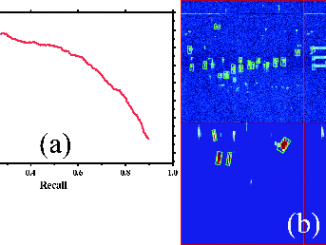Automated Detection and Statistical Study of Solar Radio Spikes by P.R. Lv et al
Solar radio spikes’ most typical observational features are their short duration and narrow bandwidth. They appear on the solar radio dynamic spectrogram as a large number of narrow-band type-III bursts, spikes, dots, sub-second clumps, groups, chains, and other narrow-band structures from decimeter to decameter wavelengths (Feng et al.(2018), Tan et al.(2019)). We have improved the YOLOv5s network model for these characteristics by adding inclined bounding frames and attention and feature […]


